Bizjets are in a class of their own, reports Ben Lovegrove.
Sometimes overlooked by those more interested in other aircraft that attract attention due to their vintage, military aspect, or rarity, business, and private jets have much to interest the aviation enthusiast. With power, performance, design, and that strong hint of luxury, bizjets are the expensive sports cars of the aviation world.
The appeal of business jets and private jet aircraft for those who travel in them is undeniable. For the busy executive, they offer the ultimate in convenience, comfort, and privacy. They also provide the opportunity to conduct business on the go, without having to worry about commercial flight schedules or airport security lines.
In addition, business jets and private jet aircraft allow travellers to avoid the hassles and delays associated with flying commercial. For these reasons and more, it’s no wonder that the demand for these types of aircraft continues to grow. Over the past twenty years, they’ve grown in number in the UK, and that presents more opportunities for spotters.
Note: The prefix ‘London’ is placed in front of an airport’s name to mark its proximity to the city rather than its true geographic location. The renaming of airfields is a rebranding exercise designed to attract more passenger traffic. Other examples include Shoreham being renamed Brighton City Airport and Lee-on-the-Solent being called Solent Airport to draw the attention of commercial operators.
London Farnborough Airport (EGLF / FAB)
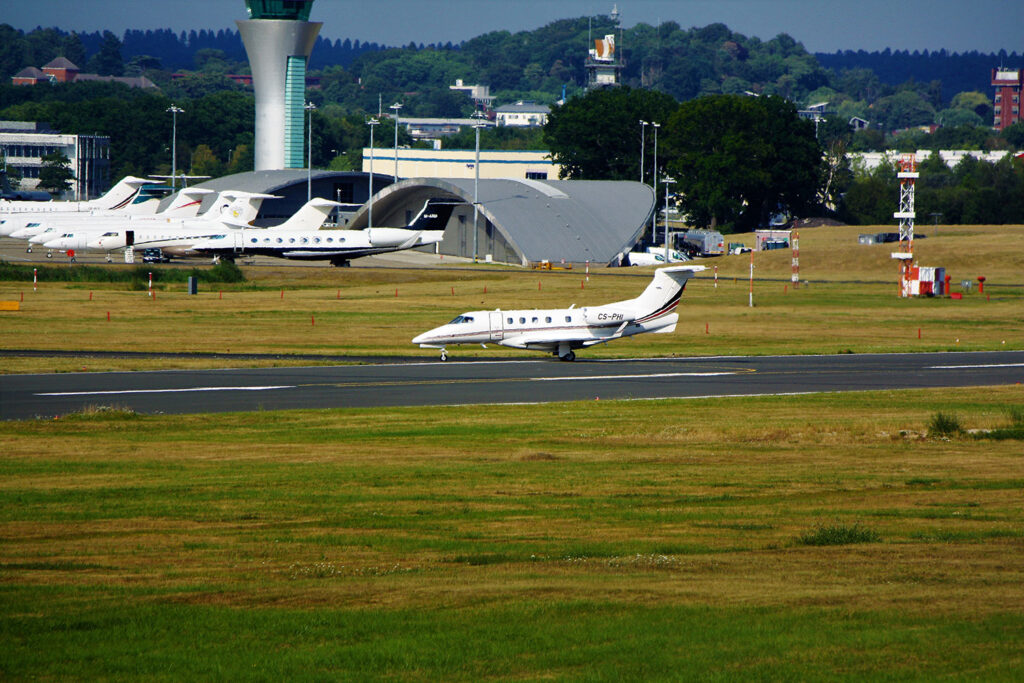
Farnborough Airport is one of the busiest regional airports in Southern England. The airport is a hub for both international and domestic air traffic. On any given day, you can see a wide variety of bizjets using the airport, from VLJ to mid-sized. The airport has been named Europe’s Number Fixed Base Operation (FBO) based on its emphasis on business and privacy.
Farnborough is a busy place, with bizjets coming and going all day long. On a typical day at Farnborough, you might see pilots carrying out preflight checks and taking off the ‘remove before flight’ tags on one or more of these aircraft types; Cessna 525 CitationJet CJ1+, Mitsubishi Challenger 850, Dassault Falcon 2000EX, Cessna 680A Citation Latitude, Cessna 560XL Citation XLS, and Embraer Phenom 300.
History of Farnborough Airport
Farnborough Airport has a long and interesting history. It was originally built in 1908 as a military aviation ground for the British Army. In the years leading up to World War II, it became an important base for the Royal Air Force. During the war, it was used as a training ground for pilots and as a launching point for air raids on Germany.
In the postwar years, it continued to serve as a military base, but it also became increasingly important as a commercial airport. Today, it is one of the busiest airports in the UK, handling thousands of passengers each year. As you can see, Farnborough Airport has come a long way since its humble beginnings over 100 years ago.
London Biggin Hill Airport (EGKB / BQH)
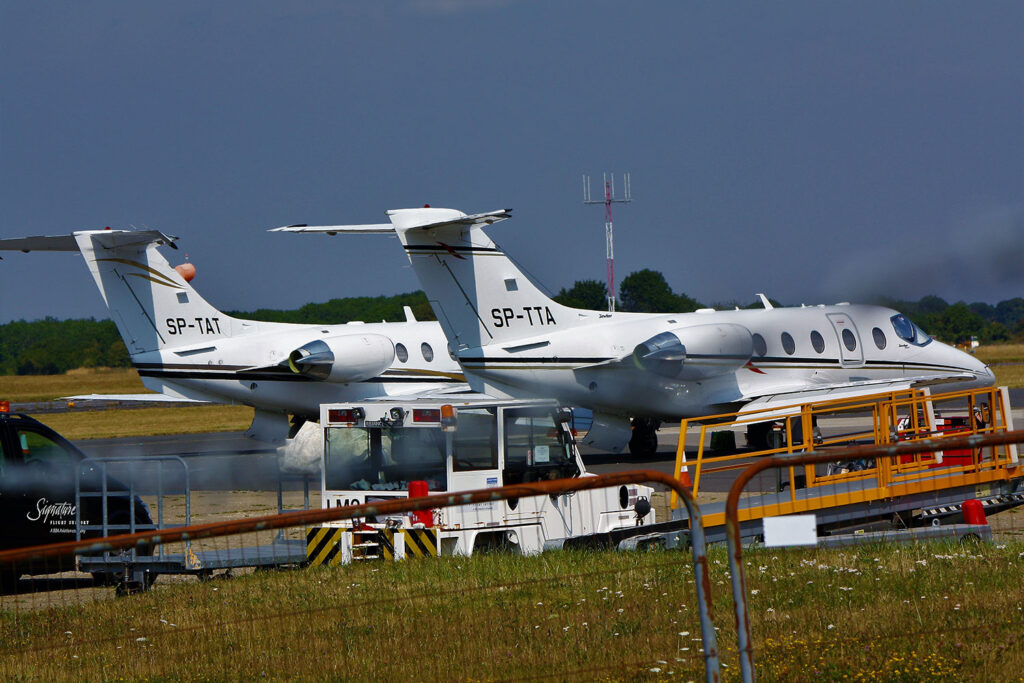
Polish Beachcraft 400XPs SP-TAT & SP TTA at Biggin Hill. Photo (c) John Madden
Biggin Hill (also known as Biggin on the Bump or just Biggin) is another airport is located just outside of London, and its proximity to the city makes it a popular choice for both domestic and international flights. The majority of the airport’s traffic is made up of commercial flights, but there are also a significant number of private jets and helicopters that use the facility, as well as General Aviation flights (PPR) and training.
Biggin Hill is home to several aviation businesses, and its proximity to London makes it an ideal base for companies that need to transport passengers or light freight to and from the city.
Aircraft types flying in and out of Biggin on a typical day include; Bombardier Challenger 350, Cessna 525B CitationJet CJ3, Hawker Beechcraft 400XP, and Learjet 45. Bombardier has a presence on the airfield with offices in Churchill Way.
History of Biggin Hill Airport
Biggin Hill Airport is situated 15 miles (24 km) southeast of Central London. The airport originated as a small grass airstrip that was used during World War I by the Royal Flying Corps. In the 1930s, the site was developed into an important fighter station known as RAF Biggin Hill.
During World War II, it was one of the key RAF stations responsible for defending London against German bombing raids. In the post-war years, the airport was used for civil aviation and became a popular destination for private and business aviation.
London Luton Airport (EGGW / LTN)
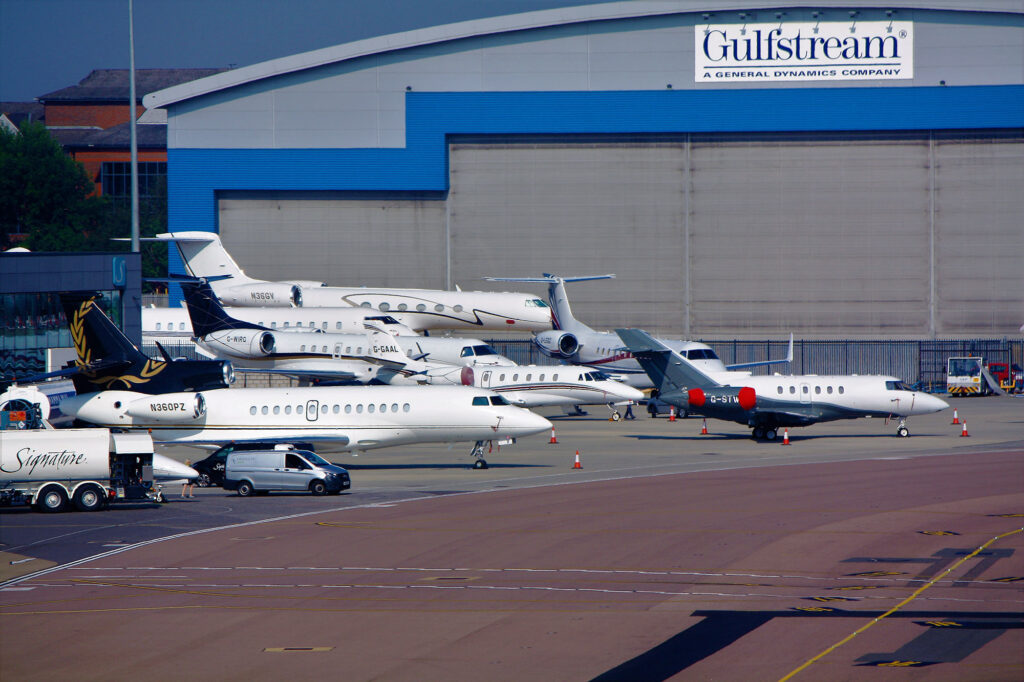
Luton Airport is the fifth busiest airport in the UK, handling 18 million passengers in 2019. Located 18 miles north of Central London, the airport is a major hub for both domestic and international flights. Being so busy, there is a steady stream of air traffic from early in the morning to late in the evening.
As well as being a hub for EasyJet, Ryanair, TUI Airways, and Wizz Air, Luton is also a popular hub for business jets, with many business people and celebrities choosing to fly into the airport. The airport has dedicated business jet terminals, which offer a range of services and amenities for passengers.
Typical bizjets that use Luton include very light jets (VLJ) (e.g. HondaJet and Cessna 510 Mustang), super midsize jets (e.g. Legacy 450 or Challenger 850), and luxury VIP jets (e.g. Boeing 737 BBJ).
History of Luton Airport
Luton Airport first opened its doors in 1938, though it wasn’t until the 1950s that it started to see a significant number of passengers. During World War II it was home to 264 Squadron RAF operating aircraft like the Boulton Paul Defiant II and the de Havilland Mosquito II & VI. By the 1960s the airport began to take off, with the construction of a new terminal and the introduction of jet aircraft.
[Read our London Luton Plane Spotting Guide]
Cranfield Airport (EGTC)
Cranfield Airport in Bedfordshire lies between Bedford and Milton Keynes. The airport is situated in a rural setting and within easy reach of these two towns. This makes it an ideal location for both business and leisure travel. Cranfield is unique in this list as its owned by an educational establishment, Cranfield University.
The majority of the traffic at Cranfield Airport is General Aviation. However, it has ambitions to grow as a hub of business aviation. Outline planning permission for an Air Park has been granted recently by Central Bedfordshire Council. The plan is to build a state-of-the-art airport for private jets with new aircraft hangars, a business terminal, office space, and a hotel with an estimated completion date of 2024.
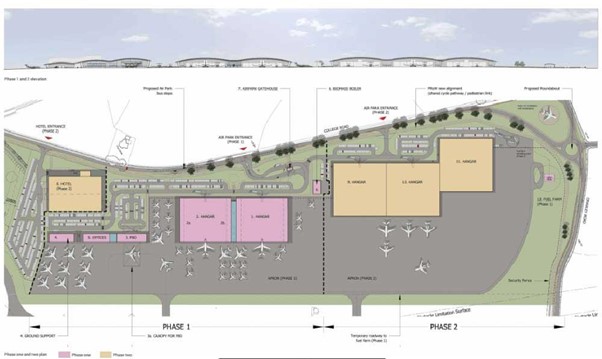
History of Cranfield Airport
Cranfield Airport was first established in the mid-1930swhen it was built for the Royal Air Force as tensions in Europe increased. During World War II, the airport played a vital role in the defense of London, and it was a base for No. 62 Squadron RAF and No. 82 Squadron RAF of No. 1 (Bomber) Group. After the war, the airport became the home of the College of Aeronautics, now Cranfield University.
Aberdeen Airport (EGPD / ABZ)
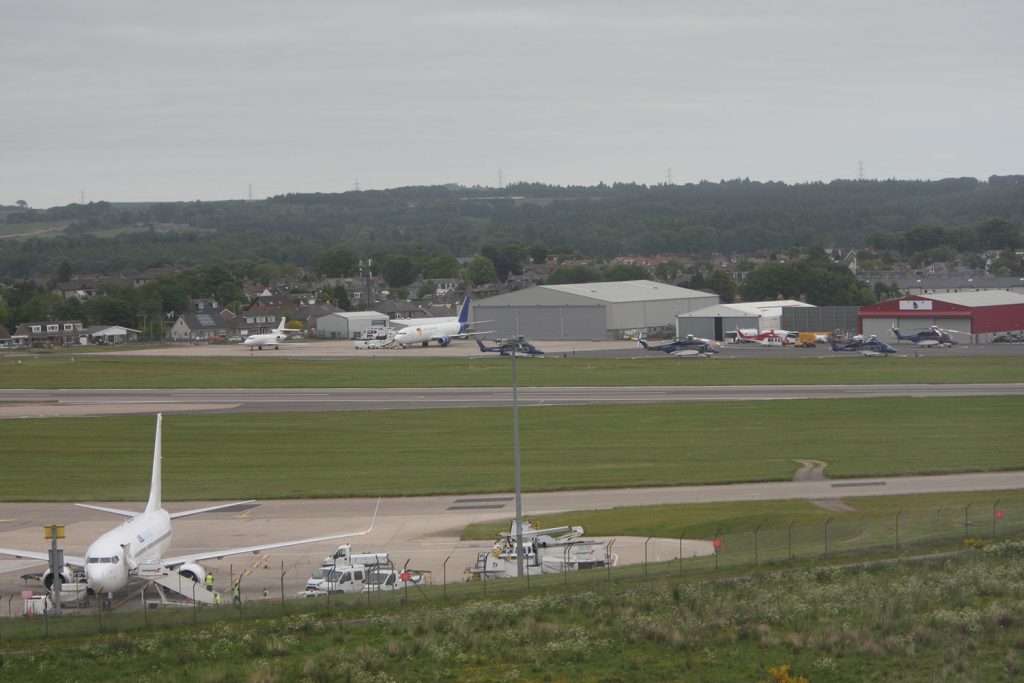
Aberdeen Airport is one of Scotland’s busiest airports. It’s an international hub with routes to many countries in Europe as well as an important domestic hub connecting Scotland with cities in England and smaller airfields on the islands off the Scottish coast.
The Scottish regional airline Loganair is based at Glasgow Airport and has a hub at Aberdeen. Loganair has recently added mid-size jets to their fleet in the form of the Embraer ERJ-135ER. Not bad for an airline that started out in the 1960s with a single Piper Aztec!
Bizjets fly into Aberdeen Airport from cities in Northern Europe, Scandinavia, and North America. These jets typically belong to large companies that have business interests in Scotland, including the oil industry. Just as with all regional airports that operate bizjets, it’s also used by government officials and dignitaries.
History of Aberdeen Airport
Aberdeen Airport is located in Dyce, a suburb of Aberdeen, Scotland. The airport has been in operation since 1934, when it was used by the Royal Air Force and known as RAF Dyce. It was home to many squadrons, including coastal commands and training units.
In the postwar years, the airport was returned to civilian use with mixed fortunes until the discovery of oil in the North Sea. This generated an increase in air traffic that persists to this day. Aberdeen Airport is served by several airlines, and it handles over three million passengers each year. Thanks to its central location and modern facilities, the airport plays an important role in connecting Scotland with the rest of the world.
Cardiff Airport (EGFF / CWL)
Cardiff Airport is the busiest airport in Wales, handling over 1.6 million passengers in 2019, though that peak was severely impacted by the Covid-19 pandemic. Located just outside the city of Cardiff, the airport is a hub for both domestic and international travel, so for travellers looking to explore Wales, Cardiff Airport is the perfect gateway.
At Cardiff, you can expect to see charter aircraft operated by DragonFly Executive Air Charter who recently added a Textron Beechcraft King Air 250 turboprop (G-MEGN) to their fleet which already included a Citation Bravo (G-JHEX) and a King Air 200 (G-OLIV).
History of Cardiff Airport
Cardiff Airport began life as RAF Rhoose during World War II when it was a satellite airfield used for training. After the war, it fell into disuse and was abandoned for a few years before it was brought back to life in the 1950s.
Today, Cardiff Airport is a major Welsh hub for both domestic and international travel, and it plays an important role in Wales’ economy. The airport has undergone extensive expansion and it now boasts a wide range of facilities. With its convenient location and excellent transport links, Cardiff Airport is poised to recover from the setbacks inflicted by the pandemic of 2020-2021.
Newcastle Airport (EGNT / NCL)
Newcastle Airport is located in the northeast of England and handles around 5 million passengers each year. The airport is a busy hub for both domestic and international flights, with several dozen movements per day. The majority of flights are conducted by scheduled airlines, but there is also a significant amount of charter traffic, particularly during the summer months.
The airport is a popular destination for business jets and in recent years, it has seen an increase in the number of bizjets flying in from around the world. The airport has also become a popular destination for private jet charter companies, who offer flights to a variety of destinations across Europe and beyond. With its convenient location and modern facilities, Newcastle Airport is well-positioned to continue growing as a hub for business aviation.
History of Newcastle Airport
Newcastle International Airport began life as Woolsington Aerodrome in 1935 and as an RAF base during World War II it was home to maintenance and salvage units. In the postwar years, the airport was expanded and became a major hub for domestic and international flights. The airport has come a long way from its humble beginnings, but it still retains its strong sense of history and community spirit.
Other UK Airports
In addition to the airports profiled above you can also spot bizjets using all the following airports:
- Barrow Walney Island Airport (EGNL / BWF)
- Belfast Airport (EGAA / BFS)
- Birmingham Airport (EGBB / BHX)
- Blackbushe Airport (EGLK / BBS)
- Bournemouth Airport (EGHH / BOH)
- Bristol Airport (EGGD / BRS)
- East Midlands Airport (EGNX / EMA)
- Edinburgh Airport (EGPH / EDI)
- Exeter Airport (EGTE / EXT)
- Gibraltar Airport (LXGB / GIB)
- Glasgow Airport (EGPF / GLA)
- Guernsey Airport (EGJB / GCI)
- Inverness Airport (EGPE / INV)
- Jersey Airport (EGJJ / JER)
- Leeds Bradford Airport (EGNM / LBA)
- London City Airport (EGLC / LCY)
- London Gatwick (EGKK / LGW)
- London Stansted (EGSS / STN)
- Manchester Airport (EGCC / MAN)
- Oxford Airport (EGTK / OXF)
- RAF Northolt Airport (EGWU / NHT)
- Southampton Airport (EGHI / SOU)
- Teesside Airport (EGNV / MME)
 About Ben Lovegrove:
About Ben Lovegrove:
My first flight was in a Bell 47-D in 1966. I gained a PPL in 1991 and a Permission for Aerial Work with a drone in 2013. I blog about General Aviation, unmanned aviation, urban air mobility, and the airline industry. Fond of window seats, aerobatics, and challenging landings.
Biz Jets Reference Guide
Airport Spotting Premium Members have access to our Biz Jets Complete Reference Guide.
Sign up today!


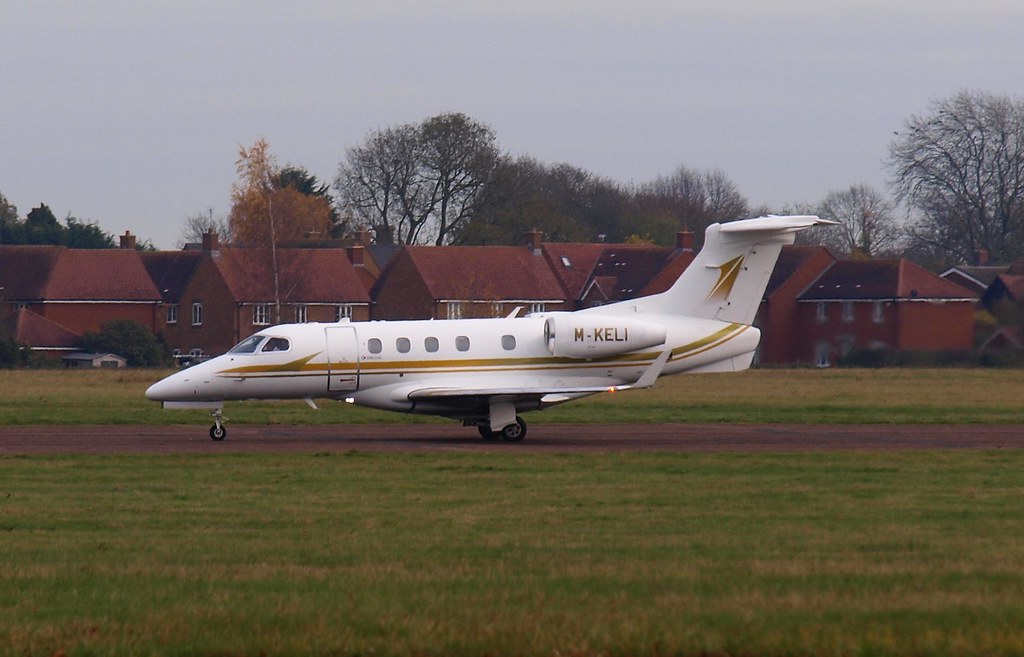

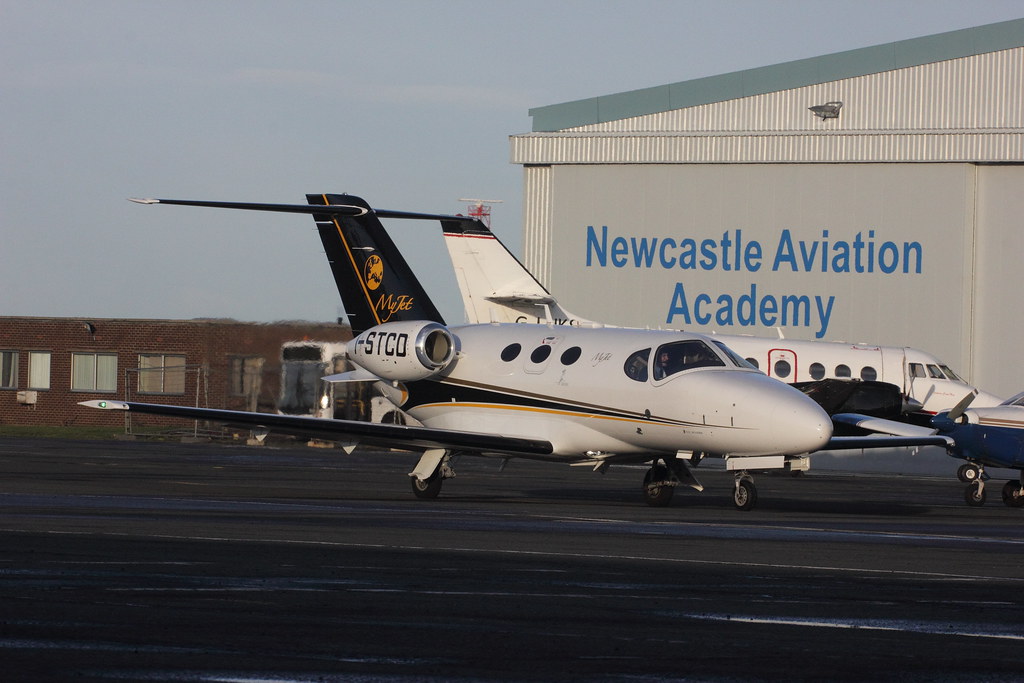

 About Ben Lovegrove:
About Ben Lovegrove:



3 comments
Don’t forget my old haunt Liverpool ‘Speke’ airport LPL/EGGP which sees arrivals of many types of Biz jets. Apart from those that arrive on corporate business many are football related especially when Liverpool FC are playing in the Champions league.
I am surprised that my local airport London Southend (SEN) is not on the list – there are Bizet visitors most days.
BIZJETS…ten a penny, sorry little or minimum interest. Many are registered in countries like San Marino, Curacao and of course the local M- rego for IOM…and the 2 Guernsey register. They are a bit like the modern car…they all look the same !
I’ll probably take a hit for saying this !
Give me a DC-3 or Fokker Friendship any time.